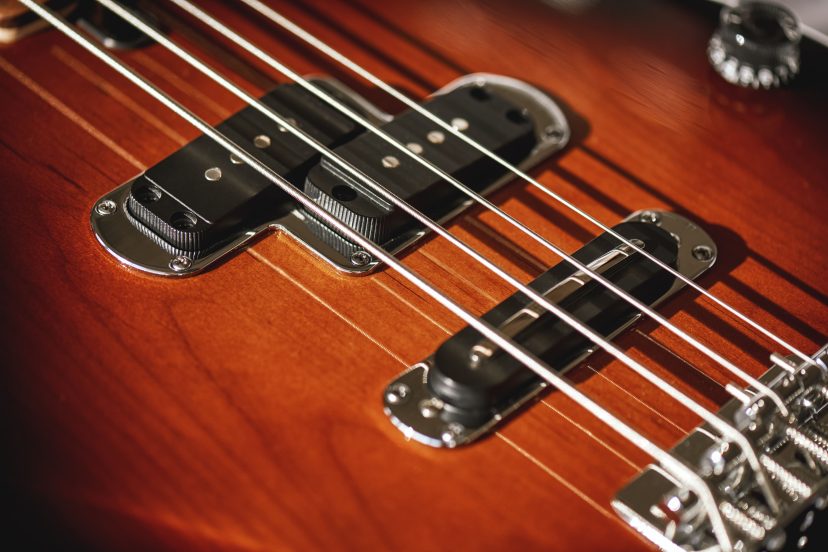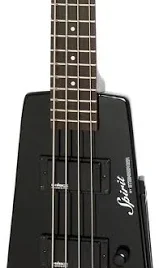String Gauge Advice for Bass Guitar
Introduction
Whether you’re a seasoned bassist or just picking up the instrument, choosing the right string gauge for bass guitar is a crucial decision. It’s not just about the sound – your choice will impact playability, comfort, and the overall feel of your bass. I like certain guages for different basses and styles. In this guide, I’ll break down everything you need to know about string gauges and how to select the perfect set for your playing style and musical needs.
Understanding String Gauge for Bass Guitar
String gauge refers to the thickness of the strings on your bass guitar, typically measured in thousandths of an inch. The gauge affects the string’s tension, which in turn influences the tone, sustain, and feel of your instrument. A thicker gauge generally means a fuller, deeper sound, while a lighter gauge offers a brighter tone with more treble.
Importance of Choosing the Right String Gauge
Impact on Tone
The string gauge you choose plays a significant role in shaping your bass’s tone. Heavier gauge strings tend to produce a warmer, richer sound with more low-end presence, perfect for genres like rock or metal. Lighter gauge strings, on the other hand, provide a more articulate and punchy tone, which can be ideal for funk or jazz. It’s all about finding the balance that suits your musical style.
Playability and Comfort
Let’s face it – playing the bass should feel comfortable. Heavier strings require more finger strength and can be tougher on the hands, especially during extended playing sessions. If you’re a beginner or someone who prefers a lighter touch, starting with lighter gauge strings might be a good idea. Conversely, seasoned players who are accustomed to more resistance might enjoy the sturdiness and control of heavier strings.
Types of String Gauge for Bass Guitar
Light Gauge Strings
Light gauge strings, typically ranging from .040 to .095 inches, are easier to play and bend. They’re great for players who favor a lighter, more agile feel and want a brighter sound. However, they may lack some of the depth and sustain found in heavier strings.
Medium Gauge Strings
Medium gauge strings (around .045 to .105 inches) are often considered a balanced choice. They offer a good mix of playability and tone, making them versatile for various music genres. If you’re unsure where to start, medium gauges are a safe bet.
Heavy Gauge Strings
Heavy gauge strings (.050 to .110 inches or more) provide a thick, powerful tone with lots of sustain. They’re excellent for genres that require a strong low end, such as metal or reggae. However, they require more finger strength and can be harder on the hands, especially for beginners.
Factors to Consider When Choosing String Gauge
Playing Style
Your playing style is one of the biggest factors in determining which string gauge is right for you. If you play with a lot of dynamics and need flexibility, lighter strings might be best. For those who play aggressively or prefer a firmer feel, heavier strings may provide the control and resistance needed. See my Bass Strings Guide.
Music Genre
Different genres call for different tones. For example, jazz and funk players might prefer lighter gauges for their clarity and snap, while rock and metal players often opt for heavier gauges to achieve a fuller, more aggressive sound. Consider the style of music you primarily play when selecting your strings.
Bass Guitar Setup
Your bass guitar’s setup can also influence your choice of string gauge. Heavier strings exert more tension on the neck, which might require adjustments to the truss rod, bridge height, and nut slot width. Lighter strings, on the other hand, might allow for a lower action and easier playability without much adjustment.
Choosing the Right String Gauge for Different Styles
Slap Bass
Slap bass playing benefits from lighter strings due to their flexibility and brightness. The reduced tension allows for quick, percussive slaps and pops, which are essential for this style. If you’re a slap enthusiast, consider going for a lighter gauge set.
Fingerstyle Bass
Fingerstyle bassists often prefer medium to heavy gauge strings. The additional tension and resistance offer better control and can help produce a more defined, rounded tone. This gauge is great for those who rely heavily on finger dynamics and need a more substantial feel.
Pick Playing
Players who use a pick might find medium gauge strings to be the sweet spot. They offer enough resistance for a solid attack without feeling too stiff. Heavier gauges can also work well, especially for genres like punk or metal, where a strong, punchy tone is desired.

How String Gauge Affects Bass Setup
Action Adjustment
Changing your string gauge can impact your bass guitar’s action – the height of the strings from the fretboard. Heavier strings might necessitate a higher action to avoid fret buzz, while lighter strings could allow for a lower action, making the instrument easier to play. It’s crucial to adjust the action based on the gauge you choose to maintain optimal playability.
Intonation and Tuning Stability
Different string gauges can affect your bass’s intonation and tuning stability. Heavier strings typically hold tuning better due to increased tension but might require more precise intonation adjustments. Lighter strings, while easier to play, might go out of tune more frequently, especially with aggressive playing. Proper setup and regular tuning checks are essential when changing string gauges.
Experimenting with Different String Gauge for Bass Guitar
Benefits of Experimentation
Don’t be afraid to experiment with different string gauges. It’s the best way to discover what works best for your style and preferences. Trying out different gauges can help you find the perfect balance of tone, playability, and comfort. Remember, there’s no one-size-fits-all answer – it’s all about personal preference!
Starting with Your Current Gauge
If you’re unsure where to start, try using the gauge that came with your bass guitar or the gauge you’ve been using. Play around with it, see how it feels and sounds, and then experiment by moving up or down in gauge. This approach allows you to understand the differences and choose what feels best for your playing style.
Debunking Common Myths About String Gauge
Heavier Strings are Always Better
There’s a myth that heavier strings always sound better or provide a fuller tone. While it’s true that they can offer more low-end and sustain, they aren’t necessarily better for every player or style. Lighter strings can deliver a bright, clear sound perfect for certain genres. It’s all about finding what works for you.
Light Strings Are Only for Beginners
Another misconception is that light strings are only for beginners. Many professional bassists use lighter gauges for their flexibility and brighter tone. Don’t let this myth steer you away from trying lighter strings – they might be just what you need for your desired sound and feel.
Tips for Maintaining Your Bass Strings
Cleaning and Care
Regular cleaning can prolong the life of your bass strings and maintain their tone. Wipe down your strings after each session to remove sweat, oils, and grime. This simple habit can help keep your strings sounding fresh and feeling smooth for longer.
When to Replace Strings
Even with proper care, strings will eventually wear out and lose their tonal quality. If your strings start sounding dull or feel rough, it’s time to replace them. The frequency of changes depends on how often you play and your tonal preferences. Some players like the bright sound of new strings, while others prefer the mellow tone of aged strings.
Conclusion
Choosing the right string gauge for your bass guitar is a personal journey influenced by your playing style, music genre, and comfort preferences. Don’t be afraid to experiment with different gauges to find the perfect match for your needs. Remember, there’s no right or wrong choice – only what feels and sounds best to you. So go ahead, try out different strings, and let your bass playing evolve!
FAQs
What string gauge is best for a beginner bass player?
For beginners, medium-light gauge strings (.045-.100) are a great starting point. They provide a balance between playability and tone, making it easier to develop your playing style.
How often should I change my bass strings?
It depends on your playing frequency and style. Regular players might change strings every few months, while occasional players can go longer. Listen to your strings – when they sound dull or feel off, it’s time for a change.
Can I mix different string gauges on my bass?
Yes, you can mix gauges, but be cautious. Mixing gauges can affect the balance and tension across the neck, potentially requiring additional setup adjustments. It’s best to consult
a professional if you’re considering this option.
What gauge strings are best for heavy music styles?
Heavier gauges, such as .050-.110, are generally preferred for heavy music styles like metal or hard rock. They provide the tension and depth needed for a strong, powerful sound.
How does string gauge affect tuning stability?
Heavier strings typically offer better tuning stability due to their increased tension. However, proper setup, intonation adjustments, and regular maintenance are key to maintaining tuning stability regardless of gauge.




